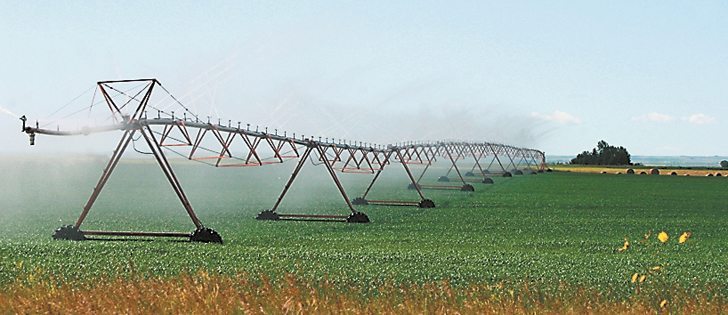Systems to determine soil moisture Programming the soil probes or metering systems and interpreting data requires expertise
LETHBRIDGE — LeRon Torrie wanted to know what his water was costing him.
The only way to find out was to install meters on his irrigation system near Grassy Lake, Alta.
He also wanted to know how much the electricity cost to run his pumps because even though he analyzed his bill every year, there were still gaps in the information.
“I want to know what an acre inch really costs,” he said at an Alberta irrigation production conference in Lethbridge Jan. 21-22.
Torrie has watched the irrigation business evolve from gravity fed waterers to low pressure pivots, which along with computers were brand new when he returned to the farm from university in 1976.
Read Also

Using artificial intelligence in agriculture starts with the right data
Good data is critical as the agriculture sector increasingly adopts new AI technology to drive efficiency, sustainability and trust across all levels of the value chain.
Different crops use different amounts of water, which can be significant in cost.
He sees society forcing changes on sharing and allocation as the competition for water increases. Farmers are now charged for the delivery of water but not the amount.
“I think we are going to be forced into water metering,” he said.
Torrie wanted something simple to assemble and maintain that would still give him a reliable measure of water use on his sandy soil.
He also wanted to know how much domestic water his family was using.
He is a board member for the St. Mary’s Irrigation District, which allows farmers to use one to four acre feet of water for domestic purposes on any irrigated parcel. However, it is not metered.
He has two yards of two acres each and fills a dugout with irrigation water for domestic use.
Torrie quickly learned that water meters can be expensive and might be difficult to maintain, but he eventually found one that cost less than $2,000. The Seametrics AG2000 flow metre runs on lithium D batteries, and the accuracy of the meter is plus or minus one percent.
The battery life appears acceptable and it has overwintered well. However, the manufacturer recommends covering it.
He has learned after two years of use that his family uses 2.35 acre feet of water for domestic use, which puts them within the district allowance. They are learning which pivots work efficiently and which need upgrades to deliver water on crops rather than into the atmosphere.
The ability to assess water use can also improve yields, said Ted Harms, a soil and water specialist with Alberta Agriculture.
Many farmers still dig into the soil with an auger to assess moisture, but numerous soil water sensors are available to help decide when to turn on the water. They measure the water in the soil profile so farmers know if there is enough or too little available for plant roots to reach.
A tensiometer uses soil parametres to assess water availability. Tension goes up as soil dries. Low tension means low water levels, although soil texture also influences the readings.
“Tension is related to the soil moisture, but the value is nothing unless you know your soil texture,” he said.
Other systems use probes to send pulses into the soil. The slower the velocity of the signal, the higher the water content.
Harms has tested the various systems and found good and bad qualities. Some were hard to figure out and others took an entire growing season to calibrate properly.
In the United States, 10.4 percent of irrigators use soil water instruments for irrigation schedules, while the use rate varies from six to nine percent in southern Alberta, where most growers prefer a manual auger.
However, producers who switch to variable rate irrigation will need better probes because they must know their soil water status so the pivot computer can be programmed to supply varying rates of water to different zones in the field.
Harms has concluded the systems are not for everyone.
In many parts of the world, consultants continually monitor soil water and advise clients on soil water status within irrigation fields.
“These systems are expensive add-ons to an irrigation system and they all work,” he said.
Many require soil specific calibrations to improve accuracy.
“The expertise required for interpretation of sensor data to determine when I irrigate and how much, and programming the specific software, limits this technology to the research or consultant’s realm,” he said.
















